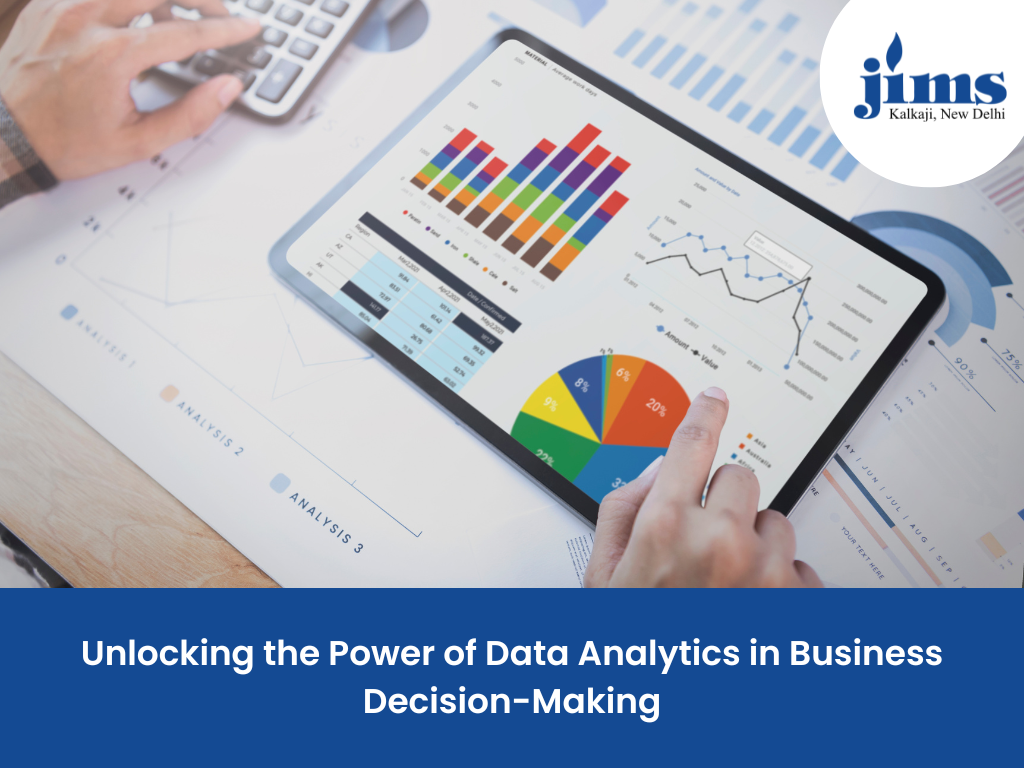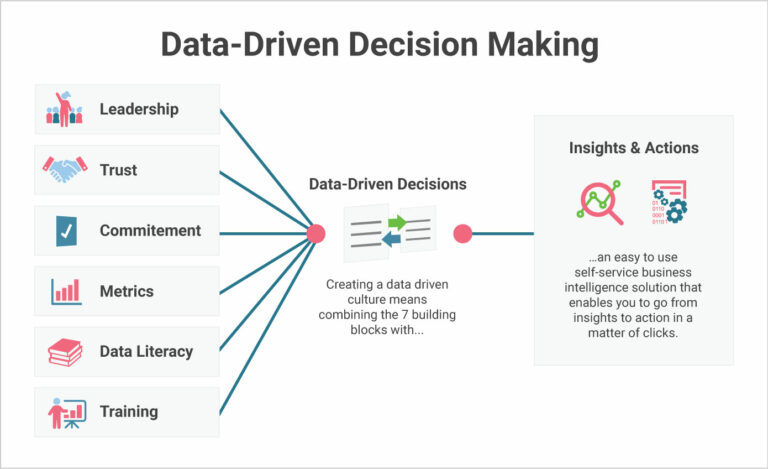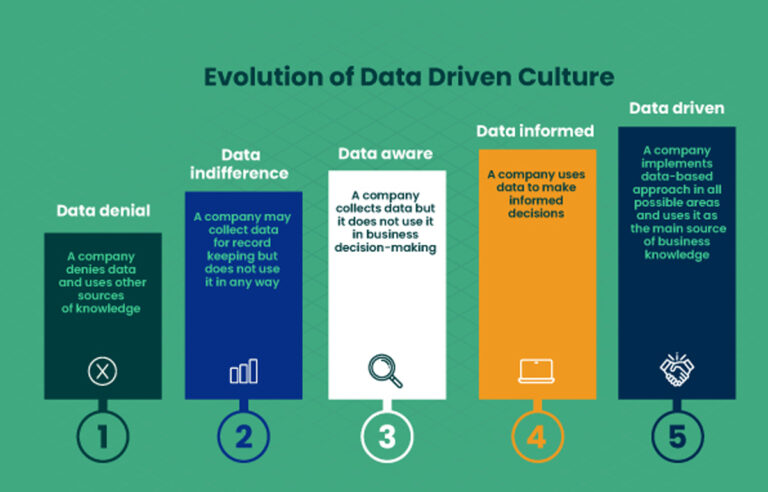P1]
In today’s data-rich environment, organizations are bombarded with information from countless sources. Raw data, however, is meaningless without the ability to extract meaningful insights. This is where data analytics comes in. Data analytics is the process of examining raw data to draw conclusions about that information. It involves applying various techniques and tools to uncover patterns, trends, and correlations within data, ultimately enabling better decision-making and improved business outcomes.
What is Data Analytics?
Data analytics is more than just looking at numbers. It’s a comprehensive process encompassing several key steps:
- Data Collection: Gathering data from diverse sources, including databases, spreadsheets, web analytics platforms, social media, and IoT devices.
- Data Cleaning: Addressing inconsistencies, errors, and missing values in the data to ensure accuracy and reliability.
- Data Transformation: Converting data into a suitable format for analysis, often involving aggregation, filtering, and standardization.
- Data Modeling: Applying statistical and mathematical techniques to uncover relationships and patterns within the data.
- Data Visualization: Presenting findings in a clear and understandable manner through charts, graphs, and dashboards.
- Interpretation and Reporting: Drawing conclusions from the analysis and communicating them effectively to stakeholders.

Types of Data Analytics
Data analytics encompasses a broad range of techniques, each serving a distinct purpose:
- Descriptive Analytics: This is the most basic form of analytics, focusing on summarizing historical data to answer questions like "What happened?" It involves calculating metrics such as averages, frequencies, and percentages to provide a snapshot of past performance. Examples include sales reports, website traffic analysis, and customer demographics.
- Diagnostic Analytics: Moving beyond descriptive analytics, diagnostic analytics seeks to understand why something happened. It involves exploring data to identify the root causes of events or trends. Techniques like data mining, correlation analysis, and drill-down analysis are used to uncover underlying factors. For instance, analyzing why sales declined in a particular region or identifying the factors contributing to customer churn.
- Predictive Analytics: Predictive analytics leverages statistical models and machine learning algorithms to forecast future outcomes based on historical data. It aims to answer the question "What might happen?" Examples include predicting customer behavior, forecasting demand, and assessing risk. Techniques like regression analysis, time series analysis, and neural networks are commonly used.
- Prescriptive Analytics: This is the most advanced form of analytics, focusing on recommending actions to optimize outcomes. It goes beyond predicting what might happen to suggest the best course of action. Prescriptive analytics combines predictive modeling with optimization techniques to identify the most effective strategies. Examples include optimizing pricing strategies, recommending personalized product offers, and improving supply chain efficiency.

Tools and Technologies Used in Data Analytics

The field of data analytics relies on a diverse range of tools and technologies:
- Spreadsheet Software (e.g., Microsoft Excel, Google Sheets): These tools are widely used for basic data analysis and visualization, particularly for smaller datasets.
- Statistical Software (e.g., R, SAS, SPSS): These tools provide advanced statistical capabilities for data modeling, hypothesis testing, and predictive analytics.
- Programming Languages (e.g., Python, SQL): Python is a versatile language widely used for data manipulation, analysis, and machine learning, while SQL is essential for querying and managing data in databases.
- Data Visualization Tools (e.g., Tableau, Power BI): These tools enable users to create interactive dashboards and visualizations to explore and communicate data insights.
- Big Data Platforms (e.g., Hadoop, Spark): These platforms are designed to process and analyze massive datasets that are too large to be handled by traditional tools.
- Cloud Computing Platforms (e.g., AWS, Azure, Google Cloud): Cloud platforms provide scalable computing resources and data storage for data analytics projects.
- Machine Learning Platforms (e.g., TensorFlow, scikit-learn): These platforms offer tools and libraries for building and deploying machine learning models.
Applications of Data Analytics Across Industries
Data analytics has become an indispensable tool across various industries, driving innovation and improving decision-making in diverse areas:
- Healthcare: Analyzing patient data to improve treatment outcomes, predict disease outbreaks, and optimize hospital operations.
- Finance: Detecting fraud, assessing risk, and personalizing financial services.
- Retail: Understanding customer behavior, optimizing pricing strategies, and improving supply chain efficiency.
- Marketing: Targeting marketing campaigns, personalizing customer experiences, and measuring marketing effectiveness.
- Manufacturing: Optimizing production processes, predicting equipment failures, and improving product quality.
- Transportation: Optimizing logistics, improving traffic flow, and enhancing safety.
- Education: Personalizing learning experiences, identifying at-risk students, and improving educational outcomes.
Benefits of Data Analytics
The adoption of data analytics offers numerous benefits for organizations:
- Improved Decision-Making: Data analytics provides insights that enable organizations to make more informed and data-driven decisions.
- Enhanced Efficiency: By identifying bottlenecks and inefficiencies, data analytics can help organizations streamline processes and improve operational efficiency.
- Increased Revenue: Data analytics can help organizations identify new revenue opportunities, optimize pricing strategies, and improve sales performance.
- Reduced Costs: By identifying cost-saving opportunities and optimizing resource allocation, data analytics can help organizations reduce expenses.
- Improved Customer Satisfaction: By understanding customer needs and preferences, data analytics can help organizations deliver personalized experiences and improve customer satisfaction.
- Competitive Advantage: Organizations that effectively leverage data analytics can gain a competitive edge by making better decisions, innovating faster, and responding more effectively to market changes.
Challenges of Data Analytics
Despite its numerous benefits, implementing data analytics can present several challenges:
- Data Quality: Inaccurate or incomplete data can lead to flawed insights and poor decision-making.
- Data Silos: Data stored in isolated systems can be difficult to integrate and analyze.
- Skills Gap: A shortage of skilled data analysts and data scientists can hinder the adoption of data analytics.
- Data Privacy and Security: Protecting sensitive data and complying with privacy regulations are critical concerns.
- Lack of Business Alignment: Data analytics projects that are not aligned with business objectives may fail to deliver value.
- Resistance to Change: Organizations may face resistance to adopting data-driven decision-making.
Overcoming the Challenges
To overcome these challenges, organizations should:
- Invest in Data Quality: Implement processes to ensure data accuracy and completeness.
- Integrate Data Sources: Break down data silos and create a unified view of data.
- Develop Data Analytics Skills: Invest in training and development programs to build data analytics expertise.
- Prioritize Data Privacy and Security: Implement robust security measures and comply with privacy regulations.
- Align Data Analytics with Business Objectives: Ensure that data analytics projects are aligned with strategic goals.
- Foster a Data-Driven Culture: Encourage the use of data in decision-making throughout the organization.
The Future of Data Analytics
The field of data analytics is constantly evolving, driven by advancements in technology and the increasing availability of data. Key trends shaping the future of data analytics include:
- Artificial Intelligence (AI) and Machine Learning (ML): AI and ML are becoming increasingly integrated into data analytics, enabling more sophisticated analysis and automation.
- Big Data: The volume, velocity, and variety of data are continuing to grow, requiring new tools and techniques for analysis.
- Cloud Computing: Cloud platforms are providing scalable and cost-effective infrastructure for data analytics.
- Edge Computing: Processing data closer to the source can reduce latency and improve real-time decision-making.
- Augmented Analytics: AI-powered tools are helping users to explore data and generate insights more easily.
- Data Democratization: Making data and analytics accessible to a wider range of users within the organization.
Conclusion
Data analytics has emerged as a critical capability for organizations seeking to thrive in the modern data-driven world. By leveraging the power of data, organizations can gain valuable insights, improve decision-making, and achieve better business outcomes. While challenges exist, organizations that invest in data quality, develop data analytics skills, and align data analytics with business objectives will be well-positioned to unlock the full potential of their data. As technology continues to evolve, data analytics will play an even more important role in shaping the future of business and society.
FAQ
Q: What is the difference between data analytics and data science?
A: While often used interchangeably, data analytics and data science have distinct focuses. Data analytics is primarily concerned with analyzing existing data to answer specific business questions and improve decision-making. Data science, on the other hand, is a broader field that encompasses data analytics but also involves developing new methods and algorithms for working with data, often involving more complex statistical modeling and machine learning. Think of data analytics as a subset of data science.
Q: What skills are needed to become a data analyst?
A: Key skills for a data analyst include:
- Technical Skills: Proficiency in tools like Excel, SQL, Python (or R), and data visualization software (Tableau, Power BI).
- Analytical Skills: Ability to analyze data, identify patterns, and draw meaningful conclusions.
- Communication Skills: Ability to communicate findings clearly and effectively to both technical and non-technical audiences.
- Domain Knowledge: Understanding of the industry or business area being analyzed.
- Problem-Solving Skills: Ability to identify and solve business problems using data.
Q: How can small businesses benefit from data analytics?
A: Small businesses can benefit from data analytics in several ways, including:
- Understanding Customer Behavior: Analyzing customer data to identify their needs and preferences.
- Improving Marketing Campaigns: Targeting marketing efforts more effectively.
- Optimizing Pricing Strategies: Setting prices that maximize revenue.
- Improving Operational Efficiency: Identifying areas for improvement in business processes.
- Making Better Decisions: Making data-driven decisions based on facts rather than intuition.
Q: What are some ethical considerations in data analytics?
A: Ethical considerations in data analytics include:
- Data Privacy: Protecting the privacy of individuals whose data is being analyzed.
- Data Security: Ensuring the security of data to prevent unauthorized access.
- Bias: Avoiding bias in data analysis that could lead to unfair or discriminatory outcomes.
- Transparency: Being transparent about how data is being collected and used.
- Accountability: Taking responsibility for the ethical implications of data analysis.
Q: How do I get started with data analytics?
A: Here are some steps to get started with data analytics:
- Learn the Basics: Take online courses or read books to learn the fundamentals of data analytics.
- Practice with Real Data: Work on projects using real-world datasets to gain practical experience.
- Develop Your Skills: Focus on developing key skills such as SQL, Python, and data visualization.
- Build a Portfolio: Create a portfolio of projects to showcase your skills to potential employers.
- Network with Professionals: Attend industry events and connect with data analytics professionals.


Leave a Reply